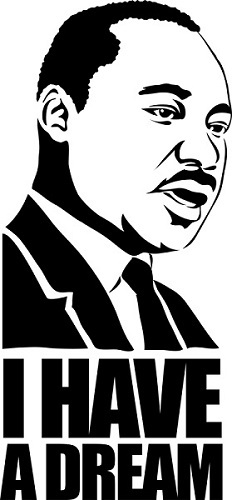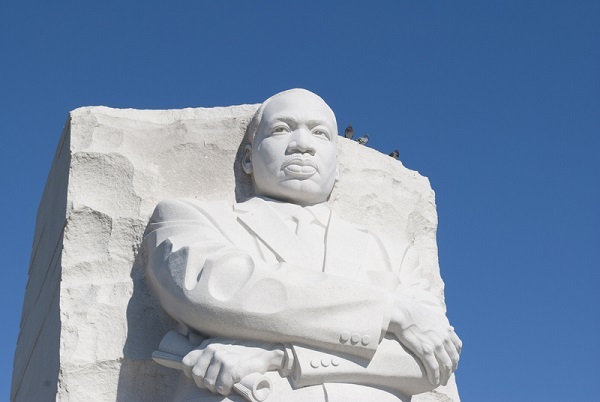


“Michael King Jr. was born in Atlanta, Georgia, on January 15, 1929”.
“Christine King Farris” was Martin's older sister, and “Alfred Daniel “A.D.” was his younger brother.
“Letter from a Birmingham Jail,” an African American (Negroes) revolt declaration; he intentionally drives to Alabama for the registration of African Americans (Negroes) as voters; he planned the peaceful walk to “Washington, D.C.”, of “250,000” and he gave his speech, “I Have a Dream,” he debated with “President John F. Kennedy” and demonstrated his assistance for “President Lyndon B. Johnson”.
In the year 1944, Martin was admitted to “Morehouse College in Atlanta” under a unique time of-war curriculum meant to improve admission by admitting promising high-school students.
Martin’s advisor at “Morehouse” was the “college president, Benjamin Mays”, a social activist whose affluent style and liberal ideas had left an exceptional impression on Martin’s father.
From Crozer, Martin went to “Boston University”, he studied man’s relationship with God and received a doctorate (1955) for a thesis titled “A Comparison of the Conceptions of God in the Thinking of Paul Tillich and Henry Nelson Wieman.”
Martin's father encouraged his determination to carry on his education and prepared for Martin to work with a leading “Crozer alum, J. Pius Barbour”.
While practising his PhD studies, Martin worked as an asst. minister at “Boston's historic” “Twelfth Baptist Church” with “William Hunter Hester”. He was an important influence on Martin.
In Boston, Martin assisted a small group of local ministers of his age, and occasionally guest pastored at their churches.
Nevertheless, despite its decision, the committee stated that “no thought should be given to the revocation of Dr. Martin's doctoral degree”.
The incident on the first week of December in the year 1955, in which “Rosa Parks, an African American woman”, declined to submit her seat on a bus to a white passenger and was detained for disobeying the city's “segregation law”.
Martin led the boycott until the city's buses were integrated.
Martin coordinated the “Southern Christian Leadership Conference” (SCLC), which gave him a site for his procedure all over the South, as well as it provides a national platform.
In Feb 1959 Martin and his party were affectionately hosted by “India’s Prime Minister Jawaharlal Nehru” and others; as the result of a detailed conversation with followers of “Mahatma Gandhi” about the “Gandhian” theories of peaceful “non-compliance (satyagraha)”, Martin became progressively influenced that “non-violent resistance was the strongest weapon available to oppressed people in their fight for freedom”.

Detail from the Martin Luther King Jr. Memorial on the National Mall in Washington DC at the tidal basin
His main legacy was the progression of civil rights in the US. Congress passed the “Civil Rights Act of 1968”.
This law was seen as an honour to Martin's final years of struggle to fight residential discrimination in the United States.
“Coretta Scott King”, Martin's wife, followed in her husband's footsteps and was active in “social justice” and “civil rights” issues until she died in the year 2006.
As a Christian minister, Martin's main inspirations were Jesus Christ, which he often cited in church speeches, public speeches, and religious meetings.
Martin's trust originated from Jesus' instruction to “love your neighbour as yourself, God above all, and your enemies, praying for and blessing them”. In his famous “Letter from Birmingham Jail”, Martin Luther King Jr. insisted on the action in harmony with what he calls Jesus' “extremist” love.
Bayard Rustin, an experienced “African American civil rights activist”, was Martin's first frequent mentor on non-violence.
In the early 1950s, Martin knew very little about Gandhi, and he seldom used the term “non-violence”.
Peacemakers instructed Martin by introducing him to the option of non-violence, arguing that it would be a good approach to achieve his civil rights goals than self-defence.
The trip to India had an impact on Martin, intensifying his knowledge of “non-violent resistance” and his dedication to “America's civil rights struggle”.
Martin Luther King, Jr. (born January 15, 1929, in Atlanta, Ga., U.S.—died April 4, 1968, in Memphis, Tenn.) was a civil rights leader in the United States. In 1957, Martin founded the Southern Christian Leadership Conference and began lecturing across the country, urging active non-violence to achieve Black Americans' civil rights.
Q1. How did Martin Luther King, Jr. pass away?
Ans. On April 4, 1968, Martin Luther King, Jr. was standing on a motel balcony in Memphis, Tennessee, when he was shot by James Earl Ray. Martin died an hour later at St. Joseph's hospital. His death sparked nationwide riots. In the United States, he is remembered on the third Monday of January each year as Martin Luther King, Jr. Day, which became a federal holiday in 1986.
Q2. Who and how did Martin Luther King, Jr. influence?
Ans. The Martin holiday is often referred to as MLK Day of Service, a nod to his legacy of addressing social problems through collective action.
Q3. What is Martin Luther King, Jr. remembered for?
Ans. His most famous work is his “I Have a Dream” speech, in which he spoke of his vision of a segregated and racist United States.